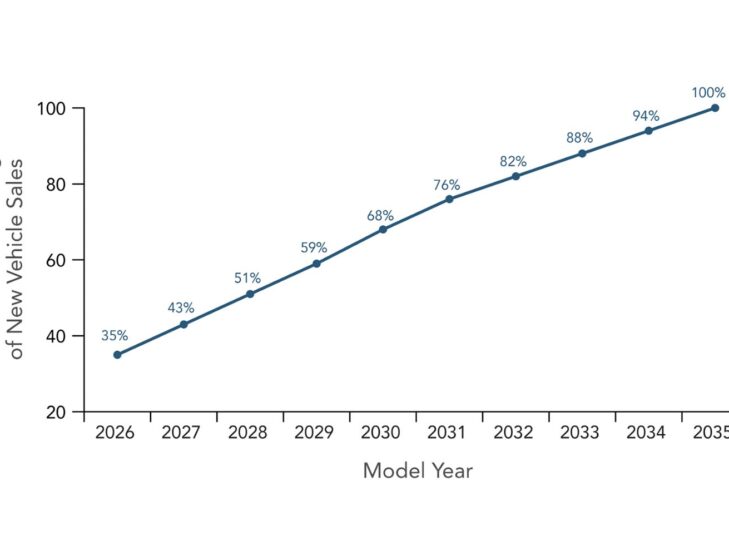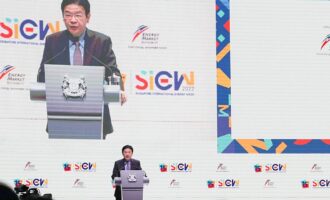
California bans sale of new gasoline-powered vehicles by 2035
The California Air Resources Board (CARB), the clean air agency of the state of California, last week approved the Advanced Clean Cars II rule that establishes a roadmap to phase out the sale of new gasoline-powered vehicles in the largest automobile market in the United States.
The rule establishes a year-by-year roadmap so that by 2035 100% of new cars and light trucks sold in the state of California will be zero-emission vehicles (ZEVs), including plug-in hybrid electric vehicles (PHEVs). The regulation realizes and codifies the light-duty vehicle goals set out in Governor Gavin Newsom’s Executive Order N-79-20.
The new regulation accelerates requirements that automakers deliver an increasing number of zero-emission light-duty vehicles each year beginning in model year 2026. Sales of new ZEVs and PHEVs will start with 35% that year, build to 68% in 2030, and reach 100% in 2035.
The regulation applies to automakers (not dealers) and covers only new vehicle sales. It does not impact existing vehicles on the road today, which will still be legal to own and drive.
Plug-in hybrid, full battery-electric and hydrogen fuel cell vehicles count toward an automaker’s requirement. PHEVs must have an all-electric range of at least 50 miles under real-world driving conditions. In addition, automakers will be allowed to meet no more than 20% of their overall ZEV requirement with PHEVs.
Battery-electric and fuel cell vehicles will need a minimum range of 150 miles to qualify under the program, include fast-charging ability and come equipped with a charging cord to facilitate charging, and meet new warranty and durability requirements.
Enhanced durability and warranty requirements
The new regulation also takes regulatory steps to assure that ZEVs can be full replacements to gasoline vehicles, hold their market value for owners, and that used car buyers are getting a quality vehicle that will not pollute.
By model year 2030, the rules require the vehicle to maintain at least 80% of electric range for 10 years or 150,000 miles. (Phased in from 70% for 2026 through 2029 model year vehicles.) By model year 2031, individual vehicle battery packs are warranted to maintain 75% of their energy for eight years or 100,000 miles. (Phased in from 70% for 2026 through 2030 model years.) ZEV powertrain components are warranted for at least three years or 50,000 miles.
“Once again California is leading the nation and the world with a regulation that sets ambitious but achievable targets for ZEV sales. Rapidly accelerating the number of ZEVs on our roads and highways will deliver substantial emission and pollution reductions to all Californians, especially for those who live near roadways and suffer from persistent air pollution,” said CARB Chair Liane Randolph. “The regulation includes ground-breaking strategies to bring ZEVs to more communities and is supported by the Governor’s ZEV budget which provides incentives to make ZEVs available to the widest number of economic groups in California, including low- and moderate-income consumers.”
Many U.S. states and nations have set targets and goals to phase out the sale of internal combustion cars. California’s is the most aggressive regulation to establish a definitive mechanism to meet required zero-emission vehicle (ZEV) sales that ramp up year over year, culminating in 100% ZEV sales in 2035.
The regulation also includes provisions that enhance equity in the transition to zero-emission vehicles and provides consumers certainty about the long-term emission benefits, quality, and durability of these clean cars and trucks and the batteries they run on. Transportation is the single largest source of global warming emissions and air pollution in the state.
By 2037, the regulation delivers a 25% reduction in smog-causing pollution from light-duty vehicles to meet federal air quality standards. CARB estimates that the regulation will result in cumulative avoided health impacts worth nearly USD13 billion from 2026 through 2040, including 1,290 fewer cardiopulmonary deaths, 460 fewer hospital admissions for cardiovascular or respiratory illness, and 650 fewer emergency room visits for asthma.
The regulation delivers multiple benefits that grow year by year. By 2030, there will be 2.9 million fewer new gas-powered vehicles sold, rising to 9.5 million fewer conventional vehicles by 2035. In 2040, greenhouse gas emissions from cars, pickups, and sport utility vehicles (SUVs) will be cut in half, and from 2026 through 2040 the regulation cuts climate warming pollution from those vehicles a cumulative total of 395 million metric tons. That is equivalent to avoiding the greenhouse gases produced from the combustion of 915 million barrels of petroleum, according to CARB.









